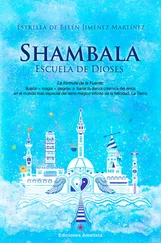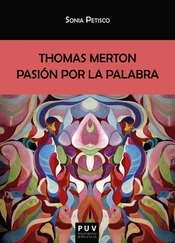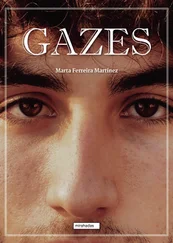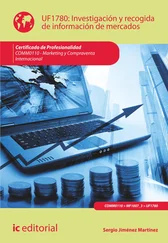I would like to conclude this introduction by expressing my heartfelt gratitude to my thesis supervisor, Dr Fernando Beltrán Llavador (University of Salamanca), who enthusiastically encouraged me to start this project, providing great ideas to give shape to this book and revising its final version; my sincerest acknowledgements to Peter Ellis (archaeologist and co–editor of Merton’s centenary volume Universal Vision) , Fiona Gardner (Senior Lecturer at Bath Spa University and Committee Member of the TMS of Great Britain and Ireland), Stephen Dunhill (retired teacher and current co–editor of The Merton Journal) , and Manuel Poggio Capote (Official Chronicler of Santa Cruz de La Palma and editor of Cartas Diferentes Journal ) for their generosity in reading and polishing the manuscript of this book, adapting it to conventional editing guidelines and making its English language sound more felicitous. My warmest thanks to Dr Paul Pearson (Director of the Thomas Merton Center, Bellarmine University, Kentucky, USA), whose constant support and mediation has favoured the publication of this collection; and to Brother Paul Quenon (Gethsemani Abbey, Kentucky, USA) and Dr George Kilcourse (Bellarmine University, Kentucky, USA) for their kind offer to be interviewed and share their thorough knowledge and understanding of Merton’s poetic voice. Finally, I would like to pay homage to my parents, whose sparkling creative streak has always taught me that a person should be independent, original, and should not “run with the herd.” 17Thank you for their neverending patience and trust in my work.
1Merton used this phrase in a letter to Amiya Chakravarty, 13 April, 1967. “And the simple fact that by being attentive, by learning to listen [… ] we can find ourself engulfed in such happiness that it cannot be explained: the happiness of being at one with everything in the hidden ground of love for which there can be no explanations.” The Hidden Ground of Love: The Letters of Thomas Merton on Religious Experience and Social Concerns (London: Collins Flame, 1990), p. 115.
2We are referring to the speech delivered by Pope Francis to the American Congress on 23 September, 2015. In his talk, the pontiff describes Merton as a notable American, a man of prayer, a thinker who challenged the certitudes of his time and who still remains a source of spiritual inspiration, a guide for many people. He even quotes a passage from Merton’s autobiography The Seven Storey Mountain: “I came into the world. Free by nature, in the image of God, I was nevertheless the prisoner of my own violence and my own selfishness, in the image of the world into which I was born. That world was the picture of Hell, full of men like myself, loving God, and yet hating him; born to love him, living instead in fear of hopeless self–contradictory hungers.” See www.washingtonpost.com/local/social-issues/transcript-pope-franciss-speech-to-congress/2015.
3“A Letter to Pablo Antonio Cuadra Concerning Giants,” in The Collected Poems of Thomas Merton (New York: New Direction, 1977), p. 374.
4Thomas Merton, New Seeds of Contemplation (New York: New Directions, 1961), p. 1.
5Thomas Merton, Contemplative Prayer (Garden City, New York: Image Books, 1969), p. 67.
6Thomas Merton, The Ascent to Truth (New York: Harcourt Brace Jonavovich, 1951), p. 133.
7Thomas Merton, The New Man (New York: Bantam Books, 1961), p. 11.
8Thomas Merton, Conjectures of a Guilty Bystander (Garden City, New York: Doubleday & Co., 1968), p. 158.
9 The Collected Poems of Thomas Merton (New York: New Directions, 1977), pp. 231–232. All the citations in this book have been used with permission of New Directions Publishing Corp.
10In his essay “Poetry and Contemplation: A Reappraisal,” Merton emphasises the intimate relationship between the contemplative and the writing vocation: “In the true Christian poet we find it hard to distinguish between the inspiration of the prophet and mystic and the purely poetic enthusiasm of great artistic genius.” The Literary Essays of Thomas Merton (New York: New Directions, 1985), p. 344.
11“Louis Zukofsky: the Paradise Ear” (1967), in The Literary Essays of Thomas Merton , op. cit., p. 128.
12Paul M. Pearson, The Geography of Lograire: Thomas Merton’s Final Prophetic Vision , in Thomas Merton: Poet, Monk, Prophet , Proceedings of the II Thomas Merton Society of Great Britain and Ireland (Great Britain: Three Peaks Press, 1998).
13 The Collected Poems of Thomas Merton , op. cit., p. 245.
14See Fiona Gardner, The Only Mind Worth Having: Thomas Merton and the Child Mind (Eugene: Oregon Wipf & Stock, 2015).
15A full listing of all the books published around this Centenary year can be found listed on the Centenary website at: http://merton.org/centenary/books.aspx. These are some of the titles published in Spain: Thomas Merton, “La voz secreta”: reflexiones sobre mi obra en oriente y occidente , edited and translated by Fernando Beltrán Llavador from “Honorable Reader”: Reflections on My Work (Santander: Sal Terrae, 2015); Fernando Beltrán Llavador, Thomas Merton: el verdadero viaje (Santander: Sal Terrae, 2015); James Finley, El palacio del vacío de Thomas Merton , edited and translated by Fernando Beltrán Llavador from Merton’s Palace of Nowhere (Santander: Sal Terrae, 2014); Ramón Cao Martínez, Ocultarse en una hoguera: Thomas Merton a través de sus diarios (Ourense, Galicia: Eurisaces Editora, 2015); María Luisa López Laguna, rcm, Thomas Merton: maestro y amigo (Madrid: Edibesa, 2015); Thomas Merton, Oh corazón ardiente: poemas de amor y de disidencia , edited and translated by Sonia Petisco (Madrid: Trotta, 2015); Diccionario de Thomas Merton , translation of The Thomas Merton Encyclopedia , ed. William Shannon, Christine M. Bochen and Patrick O’Connell, under the supervision of Francisco Rafael de Pascual, ocso (Bilbao: Editorial Mensajero, 2015).
16 Thomas Merton on St. Bernard (Michigan: Cistercian Publications, 1970), p. 119.
17Thomas Merton, The Seven Storey Mountain (New York: Harcourt Brace & Company, 1978), p. 11.
A Chronology
of Thomas Merton’s Life & Publications 1
1915 - 31 January - born at Prades, France, son of Owen Merton (artist from New Zealand) and of Ruth Jenkins (artist from USA)
1916 - moved to USA, lived at Douglaston, L.I. (with his mother’s family)
1921 - his mother dies - from cancer
1922 - in Bermuda with his father who went there to paint
1925 - to France with his father, lived at St. Antonin
1926 - entered Lycée Ingres, Montauban, France
1928 - to England - Ripley Court school, then to Oakham (1929)
1931 - his father dies of a brain tumor
1932 - at Oakham School he acquired a scholarship to Clare College, Cambridge
1933 - visited Italy, spent summer in USA, entered Cambridge in the fall - study of modern languages (French and Italian)
1934 - left Cambridge and returned to USA
1935 - entered Columbia University
1937 - at Columbia - editor of the 1937 Yearbook and art editor of The Columbia Jester
1938 - graduated from Columbia, began work on M.A.
1938 - 16 November - received into the Catholic Church at Corpus Christi Church
1940 - 1941 - taught English at St. Bonaventure College
1941 - 10 December - entered the Abbey of Our Lady of Gethsemani, Trappist, Kentucky.
[Note: 31 January, 1915 to 10 December, 1941– nearly 27 years before entering monastery. Dies on 10 December, 1968 - the 27th anniversary of his entering Gethsemani.]
Читать дальше












